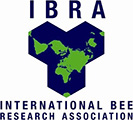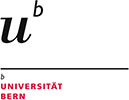|
Authors: Sofia Levin1,2, Noa Sela3 & Nor Chejanovsky1 1 Department of Entomology, Institute of Plant Protection, Agricultural Research Organization, The Volcani Center, Rishon LeZion, 7528809, Israel. 2 Institute of Agroecology and Plant Health, Robert H. Smith Faculty of Agriculture, Food and Environment, Hebrew University of Jerusalem, Rehovot, 76100, Israel. 3 Department of Plant Pathology and Weed Research, Institute of Plant Protection, Agricultural Research Organization, The Volcani Center, Rishon LeZion, 7528809, Israel. Correspondence and requests for materials should be addressed to N.C. (email: ninar@ volcani.agri.gov.il) Varroa destructor infestation of Apis mellifera colonies carries and/or promotes replication of honey bee viruses like theDeformed wing virus,theVarroa destructor virus-1,theAcute bee paralysis virus,the Israeli acute bee paralysis virus and the Kashmir bee virus that have been well described and characterized; but viruses exclusively associated with Varroa were not found. To look for viruses that may associate with- or infect V. destructor we performed deep sequencing (RNA-seq) of RNA extracted from honey bees and mites in Varroa-infested untreated colonies. Comparative bioinformatic analysis of the two separate contig-assemblies generated from the sequences’reads annotated using Blastx enabled identification of new viruses unique to Varroa and absent in A. mellifera: an Iflavirus and a virus with homology to Ixodes scapularis associated virus 2,that we namedVarroa destructor virus 2 (VDV-2) and 3(VDV-3),respectively. We validated these findings sequencing the mite- and honey bee-viromes and in separate mites and honey bees randomly sampled.The complete genomes ofVDV-2 andVDV-3 bear 9576 nucleotides and 4202 nucleotides,respectively. Phylogenetic analysis ofVDV-3 suggests thatit belongs to a new group of viruses. Our results open venues for investigating the pathogenicity of these V. destructor viruses. |
|
“The ectoparasite Varroa destructor spread throughout the world, from the Asian honey bee Apis ceranae to the European honey bee Apis mellifera, since the middle of the last century1 . The expansion of Varroa to new A. mellifera colonies broadened its interaction with honey bee viruses2 since the mite is able to vector Acute bee paralysis virus (ABPV)3 , Deformed wing virus (DWV)4,5, Israeli acute bee paralysis virus (IAPV)6 , Kashmir Bee Virus (KBV)7 and Sacbrood Virus (SBV)8 . Moreover, Varroa infestation deeply changed the nature of DWV infections from common mild asymptomatic infections to symptomatic lethal infections by promoting the selection of virulent DWV strains9–12 and boosting a worldwide viral epidemic13. Agricultural production heavily relies on A. mellifera-mediated pollination14, estimated in 2007 to add globally around $40 billion to crop value annually15. Because Varroa infestations and virus infections (mainly DWV) became major drivers of collapse of honey bee colonies1,5,16–19 they therefore threaten food security. It is known very little about viruses infectious to V. destructor. So far the honey bee viruses vectored by V. destructor seem not to cause pathogenic symptoms to the mite, including a virus discovered in the mite, the Varroa destructor virus-1 (VDV-1) that is highly homologous to DWV20. Also, fragments of a baculovirus were identified by surveying the genome of Varroa21. Another study identified a Tymoviridae-like virus in Varroa transcriptomes22. To investigate if there are viruses that may specifically associate\infect V. destructor we performed deep sequencing (RNA-seq) and comparative bioinformatics analysis of RNA extracted from honey bees in Varroa-infested untreated colonies and from V. destructor. Our data revealed novel viruses present in V. destructor and absent in A. mellifera. The discovery these new viruses paves the way for studying their pathogenicity to Varroa and exploring their suitability as means to control this pest.” |
| http://rdcu.be/mVta |







